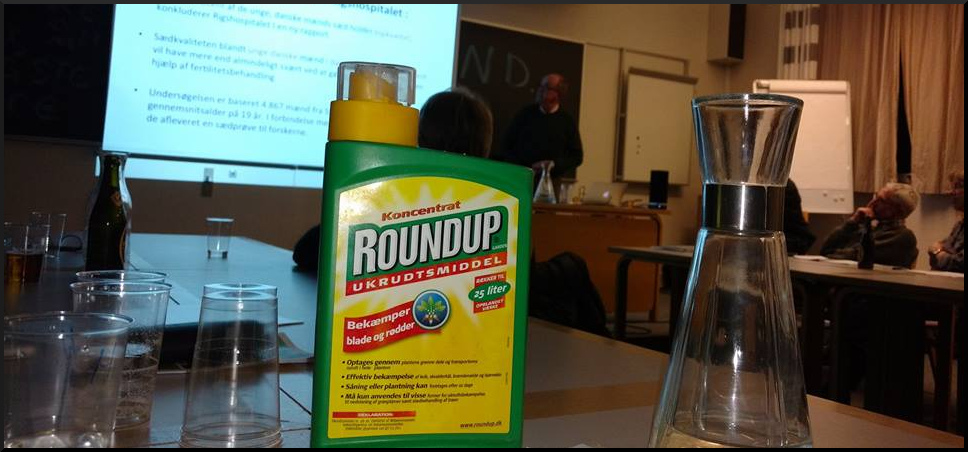by Colin Todhunter, Published on Countercurrents blog, June 5, 2019
Environmentalist Dr Rosemary Mason has just written to the Editor-in-Chief of the British Medical Journal and the British Medical Association Council Chairman, Chaand Nagpaul.
Her purpose is to not only draw attention to the impact of biocides, not least that of glyphosate, on health and the environment but also to bring attention to the corruption that allows this to continue.
Along with her letter, she enclosed a 13-page document. Readers can access the fully referenced document here: European Chemicals Agency classifies glyphosate as a substance that causes serious eye damage. It is worth reading in full to appreciate the conflicts of interest and the corruption that has led to the rise in certain illnesses and the destruction of the natural environment.
By way of a brief summary, the key points raised by Dr Mason and her claims include the following.
- The European Chemicals Agency classifies glyphosate as a substance that causes serious eye damage. There has been a massive increase in the use of glyphosate in recent years. An increase in cataracts has been verified by epidemiological studies in England and by a 2016 WHO report.
- There are shockingly high levels of weed killer in UK breakfast cereals. After testing these cereals at the Health Research Institute in Iowa, Dr Fagan, director of the centre, said: “These results are consistently concerning. The levels consumed in a single daily helping of any one of these cereals, even the one with the lowest level of contamination, is sufficient to put the person’s glyphosate levels above the levels that cause fatty liver disease in rats (and likely in people).”
- The amount of glyphosate in tap water in South Wales has increased tenfold in a very short period.
- Glyphosate is largely responsible for the destruction of biodiversity and an increase in the prevalence of many serious health conditions.
- There are massive conflicts of interest throughout various agencies in the EU that ensure harmful agrochemicals like glyphosate come to market and remain there.
- In fact, a global industry has emerged to give ‘advice’ on biocides regulation. This results in regulatory bodies effectively working to further the commercial interests of the pesticide industry.
- The European Food Safety Authority sanctioned increased maximum pesticide residue levels (MRL) at the request of industry (Monsanto in this case, to 100 times the previously authorised MRL).
- The Washington-based International Life Sciences Institute (ILSI) is used by corporate backers to counter public health policies. Its members have occupied key positions on EU and UN regulatory panels. It is, however, an industry lobby group that masquerades as a scientific health charity. The ILSI describes its mission as “pursuing objectivity, clarity and reproducibility” to “benefit the public good”. But researchers from the University of Cambridge, Bocconi University in Milan, and the US Right to Know campaign assessed over 17,000 pages of documents under US freedom of information laws to present evidence of influence peddling.
- ILSI Vice-President, Prof Alan Boobis, is currently the Chairman of the UK Committee on Toxicity of Chemicals in Food, Consumer Products and the Environment (CoT) (2015-2021). He was directly responsible for authorising chemicals such as glyphosate, chlorothalonil, clothianidin and chlorpyrifos that are destroying human health and creating a crisis in biodiversity. His group and others have authorised glyphosate repeatedly. He and David Coggon, the previous Chairman of CoT (2008-2015), were appointed as experts on Science Advice for Policy by European Academies (SAPEA), a group allied with the agrochemical industry and is fighting for higher pesticide exposure.
- Jean-Claude Juncker the President of the European Commission who, against a petition from more than 1.5 million European citizens, re-authorised glyphosate in December 2017 for a further five years. He set up the Science Advisory Mechanism, aiming to put industry-friendly personnel on various committees.
There are many more claims presented by Rosemary Mason in her report. But the take-home point is that the reality of the agrochemical industry is masked by well-funded public relations machinery (which includes bodies like the UK’s Science Media Centre). The industry also subverts official agencies and regulatory bodies and supports prolific lobby organisations and (‘public scientists’) which masquerade as objective institutions.
When such organisations or figures are exposed, they frequently cry foul and attempt to portray any exposure of their lack of integrity as constituting an attack on science itself; no doubt many readers will be familiar with the ‘anti-science’ epithet.
The industry resorts to such measures as it knows its products are harmful and cannot stand up to proper public scrutiny. And under a system of sustainable agroecology that can produce plentiful, nutritious food, it also knows its markets would disappear.
Motivated by fraud and fear of the truth emerging, it therefore tries to persuade politicians and the public that the world would starve without it and its products. It co-opts agencies and officials by various means and embeds itself within the policy agenda, both nationally and internationally.
And now, with increasingly saturated markets in the West, from Africa to India the industry seeks to colonise new regions and countries where it attempts to roll out its business model. Whether, say, through trade agreements, the WTO or strings-attached loans, this again involves capturing the policy ground and then trapping farmers on a financially lucrative chemical(-GMO)-treadmill, regardless of the consequences for farmers’ livelihoods, food, public health and the environment.
Colin Todhunter is an independent journalist. You can join him on Twitter
